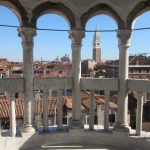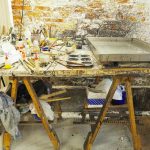The Doge’s Palace was up to 1797 the residence of the Doge (the Venetian leader), the seat of the government, the palace of justice and the archive for all records. Thousands of men walked up and down the Golden Staircase, thousands of hands touched its now smoothed railings, thousands of visitors stopped in front of those wooden doors before walking in.
Nowadays thousands of visitors walk daily through the building, nearly 1,300,000 a year in 2015, making it thus the most visited museum in Venice.
During the day I visit several times a week these impressive rooms; depending on the season I find other colleagues with small parties or bigger groups with headsets, but very rarely are these empty. I always wondered what they look like empty and at night.
Well, this year the Doge’s Palace was open in the summer months from Fridays to Sundays up to 23 hours, 11 pm.
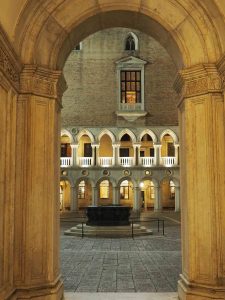
courtyard at night, Southern side
Two weekends ago around 9 pm I set off to the Doge’s Palace with my camera full of expectations. I was very much looking forward to this evening visit that I had had to postpone a couple of times.
All decorations in the institutional rooms were redone after two fires in 1574 and 1577 at a time when Venice had long reached and was past its peak, at a point when the state was declining fast. The rooms were therefore redone as splendid and as monumental as possible, self – glorification in one word.
Was it possible for these rooms to look even more spectacular than usual, I asked myself ?
Doge’s palace at night
The courtyard was empty, the sky was getting quickly really dark, the lights were on.
It was silent and breathtaking. Photos do not render justice to this splendid atmosphere.
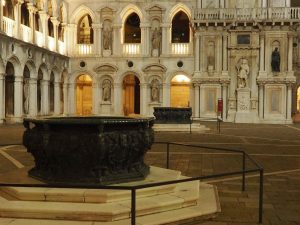
courtyard at night, Northern side
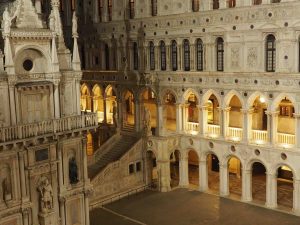
courtyard at night, Eastern side
I walked up to the Renaissance Golden Staircase. I must admit the frescoed ceiling of the staircase of Jacopo Sansovino looked as impressive as usual, not much different compared to during the day.
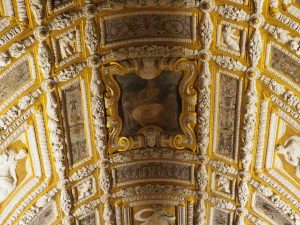
Golden staircase
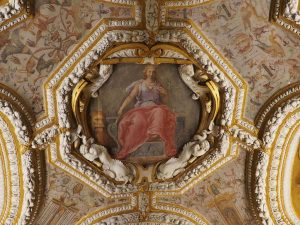
detail, personification of Venice
Maybe my expectations were too high?
Suddenly when turning into the first Square Room I could see through the door leading into the Room of the Four Doors, into the Anticollegio and the Collegio, an intimidating sequence of doors. The shining terrazzo floor invited me immediately to enter further.
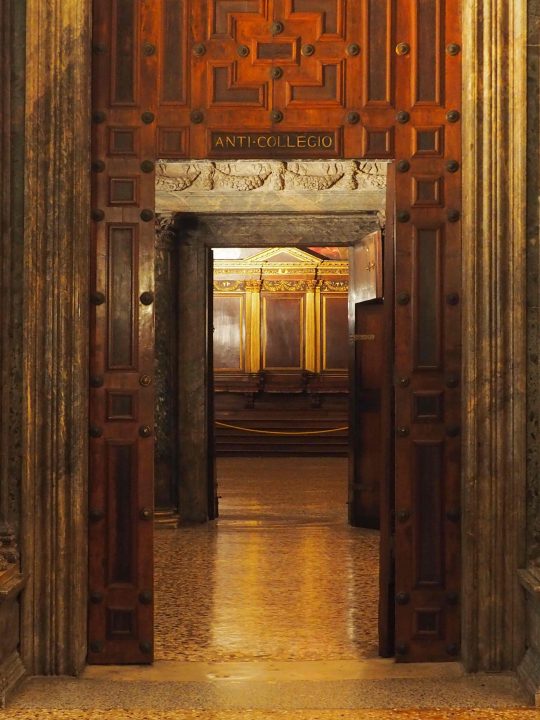
intimidating sequence of doors/rooms from the Square Room
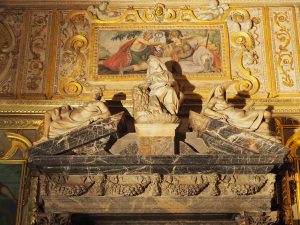
Anticollegio, door leading into the Collegio
The white and gilded plastered ceiling of the two waiting rooms was attractive, but my attention was drawn to the sumptuous wooden carved ceiling of the Collegio.
Paolo Veronese’s paintings were magnificent, but the frames by Antonio da Ponte in their elegant lines had acquired more importance. These ceilings with their symmetrical patterns determine without any doubt the feeling of amazement and wonder when stepping into the room.
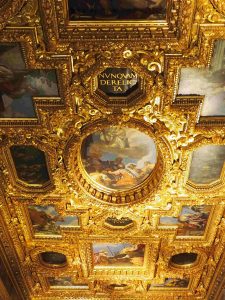
amazing Collegio ceiling
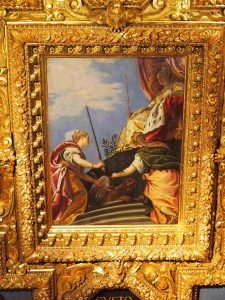
detail, Venetia, peace and justice
I felt the same feeling when looking up at the frames by Cristoforo Sorte in the Senate where I started noticing details I had never seen before. In the Collegio Da Ponte united the frames by using curvilinear swirls, Sorte instead by using elastic long forms like wooden ribbons and festoons.
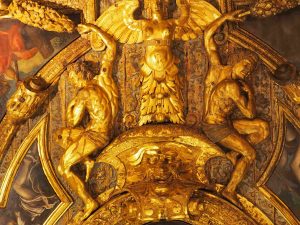
detail of ceiling in the Senate
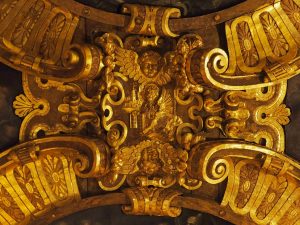
detail, winged lion
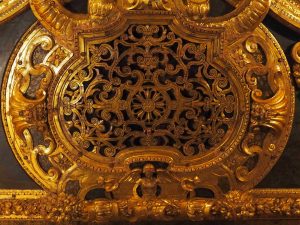
detail
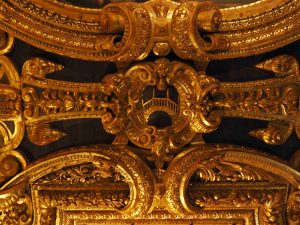
detail, coat of arms Da Ponte
Then a quick walk through the Council of Ten and the Armoury: suspense, suspense for the last room, the grand and inspiring Gran Consiglio, the biggest room ever built in Venice.
It is my favorite room during the day, magnificent, grand and awe-inspiring; and at night the room transmits to the visitor an extraordinary non describable and incredible ‘energy’.
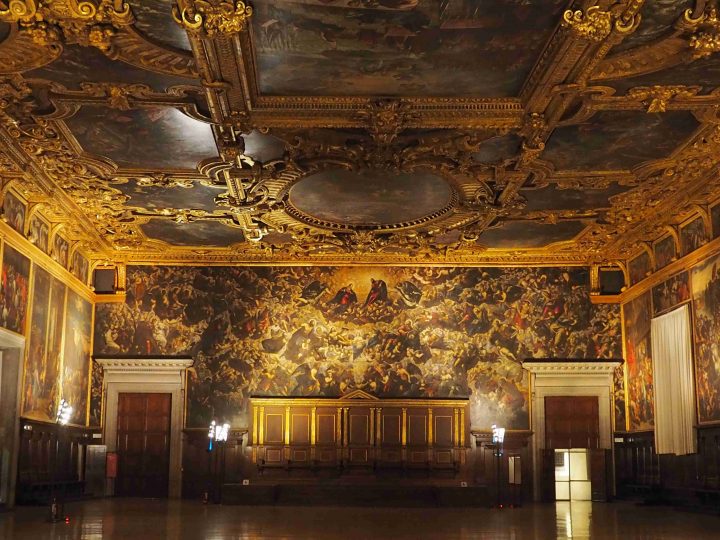
the magnificent and awe-inspiring Maggior Consiglio of the Doge’s palace
Should you be in Venice please try to plan a visit at the very end of the day when the museum is no longer crowded and when dusk is falling.
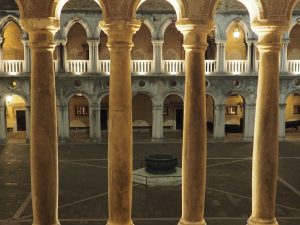
courtyard with well at night
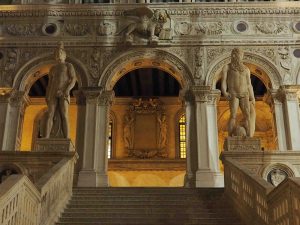
Giants’ staircase at night
Fiona Giusto
www.venicetours.it



